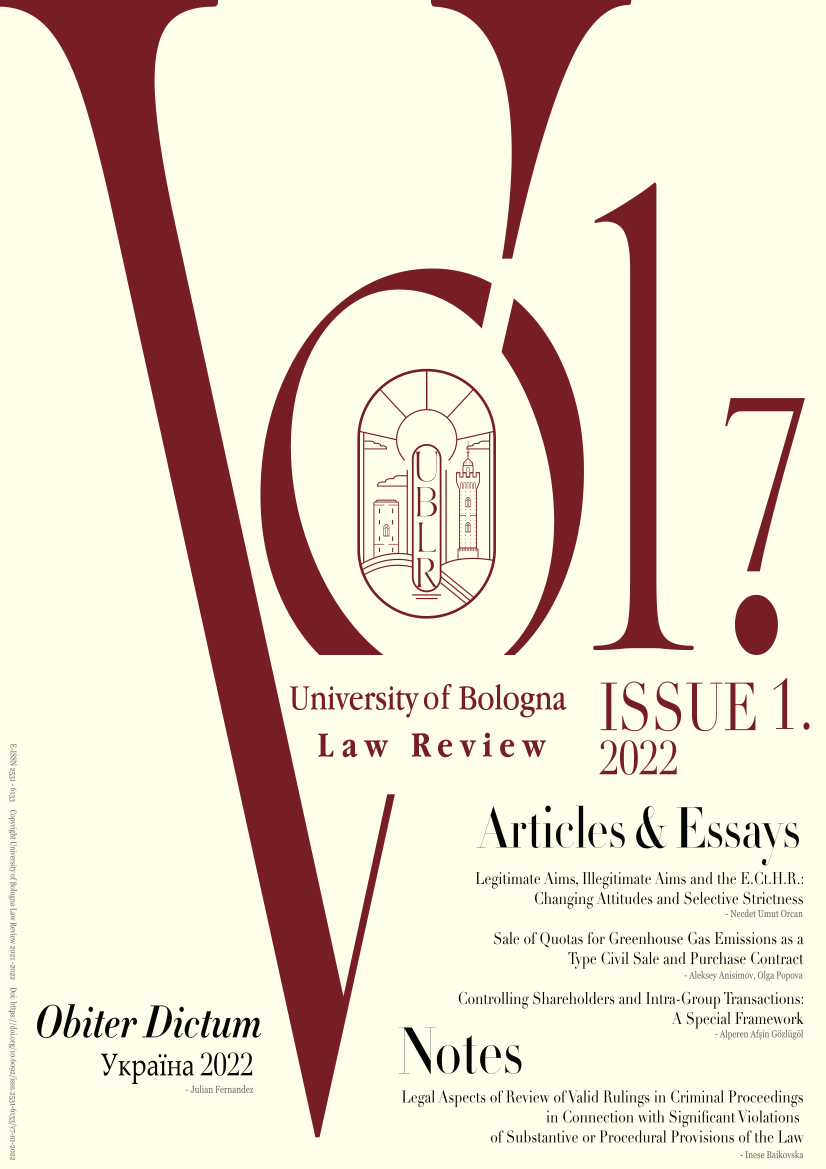Legitimate Aims, Illegitimate Aims and the E.Ct.H.R.: Changing Attitudes and Selective Strictness
DOI:
https://doi.org/10.6092/issn.2531-6133/14860Keywords:
Legitimate Aims, European Court of Human Rights, European Convention on Human Rights, Bad Faith, Jurisprudence, Selective StrictnessAbstract
This article aims to trace the recent changes in the case law of the European Court of Human Rights, pertaining to the legitimate aim test, which has so far not been appropriately considered in existing jurisprudence. It first shows that the legitimate aim test is not just a paper tiger, and has a bigger bite than it has been given credit for, especially for the last ten years. Furthermore, despite its “procedural turn”, the Court has recently been more inclined to take the legitimate aim disputes to a factual level by questioning the governments’ assertions of legitimate aims with regard to not only their legal justificatory capacities but also as to their factual accuracy. However, this shift towards a stricter, more sceptical approach is only observable against certain member states. This finding aligns with recent scholarship on the Court’s differentiated approach towards Member States, often called “the variable geometry”.
Downloads
Downloads
Published
How to Cite
Issue
Section
License
Copyright (c) 2022 Nected Umut Orcan

This work is licensed under a Creative Commons Attribution 4.0 International License.








